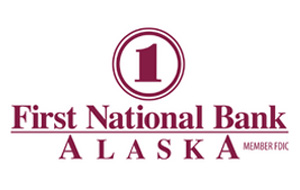Introduction
In the vast and varied landscape of Alaska, high school tennis has found a place to flourish, providing students with the opportunity to develop their athletic skills, build camaraderie, and engage in healthy competition. Despite the state’s often harsh weather conditions and logistical challenges, Alaska’s high school tennis programs are thriving, supported by dedicated coaches, enthusiastic players, and passionate communities. This article explores the unique aspects of high school tennis in Alaska, highlighting the sport’s growth, challenges, and the impact it has on student-athletes.
The Rise of High School Tennis in Alaska
High school tennis in Alaska has steadily gained popularity over the years. Schools from Anchorage to Fairbanks, and even in more remote regions, have established tennis programs, recognizing the sport’s benefits in promoting physical fitness, mental acuity, and social interaction. The Alaska School Activities Association (ASAA) plays a crucial role in organizing state-wide tennis competitions, ensuring that the sport is accessible to students from diverse backgrounds and regions.
Overcoming Challenges
One of the significant challenges faced by high school tennis in Alaska is the state’s unpredictable weather. With long winters and short summers, outdoor tennis is limited to a few months of the year. To overcome this, many schools have invested in indoor facilities or formed partnerships with local clubs to provide year-round training opportunities. Indoor courts allow players to practice and compete regardless of weather conditions, ensuring consistent development of their skills.
Another challenge is the vast distances between schools, which can make travel for competitions difficult and expensive. Despite this, schools and communities have shown remarkable commitment to ensuring their athletes can participate in regional and state tournaments. The logistical hurdles often foster a sense of resilience and adventure among players, who learn to adapt and thrive in challenging environments.
Community Support and Development
Community support is vital for the success of high school tennis programs in Alaska. Parents, local businesses, and tennis enthusiasts often come together to support their teams, providing financial assistance, volunteer coaching, and logistical support. This community involvement not only strengthens the tennis programs but also builds a strong sense of pride and unity.
Local tennis clubs and organizations also play a significant role in developing young talent. They offer coaching clinics, tournaments, and opportunities for players to compete at higher levels, ensuring a continuous pipeline of skilled athletes. Many high school players benefit from these programs, gaining valuable experience and exposure to different styles of play.
Impact on Student-Athletes
High school tennis in Alaska offers numerous benefits to student-athletes. The sport promotes physical fitness, coordination, and strategic thinking. It also teaches important life skills such as discipline, teamwork, and perseverance. For many students, tennis becomes a lifelong passion, providing opportunities for college scholarships and further athletic pursuits.
Additionally, high school tennis fosters a sense of community and belonging. The bonds formed on the court often extend beyond the sport, creating lasting friendships and support networks. The challenges and triumphs experienced together build character and resilience, preparing students for future endeavors.
Conclusion
High school tennis in Alaska is more than just a sport; it is a testament to the determination, resilience, and passion of students, coaches, and communities. Despite the unique challenges posed by Alaska’s geography and climate, the sport continues to grow and thrive. High school tennis provides a platform for young athletes to develop their skills, build relationships, and achieve their goals. As the sport evolves, it will continue to enrich the lives of student-athletes and contribute to the vibrant athletic culture of the Last Frontier.


